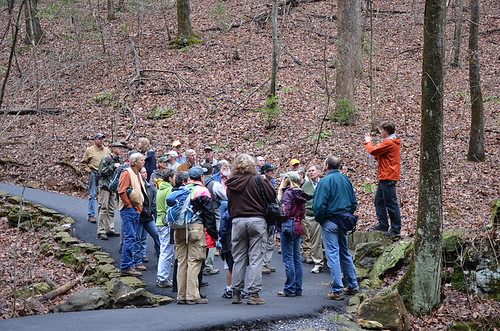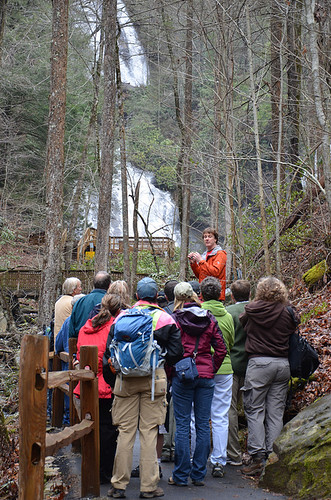
The Chattahoochee-Oconee National Forests in Georgia receive 2.2 million visitors each year, and their primary activity is use of 850 miles of designated system trails. But it’s not only hikers that take advantage of the recreation opportunities which these trails provide. Cyclists, hunters, anglers, off-highway vehicle enthusiasts and horseback riders all recreate on national forest trails-- and they don’t always see eye-to-eye.
One year ago, the Chattahoochee-Oconee National Forest embarked on a unique collaborative effort to bring these trail users together to help identify and maintain a diverse, quality trail system on Georgia’s national forests. By working together with all trail users, the Forest Service created an opportunity to seek new ways to deal with the ever-increasing use of trails, public demand for more trails, limited agency resources to properly maintain existing trails, and potential competition among different trail users.
The forests first began the Collaborative Trails Initiative, or “CoTrails,” by hosting a series of meetings in forest communities. How could all trail users work together and with the Forest Service to address shared concerns and find solutions? More than 350 people attended those meetings. A core group of more than 40 volunteers coalesced to see the effort through the planning stage. The result is a five-part strategic plan launched in January that the Forest Service and an ever-growing number of CoTrails volunteers are beginning to implement.

The CoTrails Strategic Plan outlines five objectives. They include engaging volunteers, inventorying and assessing existing trails, creating a forest-wide interactive online map of the trail system and identifying unauthorized trails and opportunities to incorporate new system trails on the national forests. A professional assessment of 200 miles of trails is already underway, and thousands of volunteer hours have already been invested.
The far-reaching influence of this effort will benefit more than just trail users by offering a more satisfying recreation experience. It will also protect watersheds, improve forest health and contribute to local and regional economies that depend on forest-related recreation.
To volunteer with CoTrails, learn more about the initiative or read the Strategic Plan, visit the CoTrails volunteer website or the Chattahoochee-Oconee National Forests’ website. You can also connect with CoTrails volunteers on Facebook at http://www.facebook.com/CoTrails.

